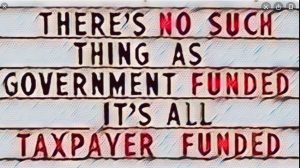-
A short chapter cut from my dissertation, Shopping for Wholeness: The Political-Economy of Whole Foods Market and the Commodification of Altruism
Our meat and poultry is renowned for great taste and quality. We believe this has a lot to do with the care that goes into raising the animals and the true partnerships we have with our farmers and ranchers (1).
At Whole Foods Market we believe that sustainable seafood comes from responsibly managed fish farms and marine fisheries that maintain healthy fish populations and ecosystems (2).
John Mackey had always felt that Whole Foods had “the best animal welfare standards in the nation,” but in the spring of 2003 animal rights activists picketed Whole Foods’ stakeholders meeting with the organization Viva! USA’s president demanding for a boycott of the company based on its dealings with suppliers employing many of the same inhumane factory farming methods that many ethical and health-conscious consumers seek to avoid by Whole Foods (3). At the time, Mackey had never personally visited any of the farms that supplied Whole Foods’ meats and instead took the word of Whole Foods’ representatives who had said, “the conditions were ‘good,’ in comparison to their competitors” (4). Despite his good-faith reliance on these assessments, Mackey, took this threat of a boycott to heart, immersing himself in literature on factory farming and animal rights—a process that led him as a long-time vegetarian to drop animal products altogether, becoming vegan. At this time he also visited Viva!’s main culprit in their lament against Whole Foods animal welfare standards—Grimaud Farm, from which Whole Foods was sourcing its duck. Upon discovering the deplorable conditions at Grimaud, Mackey was not only back in touch with Viva!, but also reached out to People for the Ethical Treatment of Animals, the Humane Society of the United States, and others to develop standards that would “provide better lives for a wide range of animals” (5).
Whole Foods stance on animal welfare has evolved with the company’s success, seemingly delivering on Mackey’s promise that more ‘good’ can be done with more money and greater market influence. Beginning in 1980 with the prohibition of antibiotics in animals used for meat and then the 1996 banning of fois gras, a product created from the fatty livers of the force-feed ducks or geese, Whole Foods’ expanded their animal welfare standards in 2002 after working with renowned doctor of animal science and animal-behavior specialist, Temple Grandin (6). Over the next several years Mackey’s continued self-education on animal welfare and correspondence with animal rights groups resulted in incremental steps towards a more comprehensive animal welfare program. In 2004 Whole Foods stores seized carrying eggs farmed from caged hens. Come 2005 the company rolled out species-specific animal welfare standards, which it publicized in its stores and company literature. The company-specific codification of suppliers came to full bloom in 2008 with its color-coded certification and designation schema. Working with Global Animal Partnership to certify their producers’ animal welfare practices according to a 5-Step Animal Welfare Rating system, Whole Foods has instituted easy to recognize and interpret signage that is used in its stores across the US and Canada (7).
Yet, it must be noted that while Global Animal Partnership is an independent organization composed of representatives from the retail and agricultural sectors as well as the animal welfare field, it was created out of Whole Foods’ desire to create animal welfare standards that would have a greater impact on the industry. As an internally conceptualized third-party non-profit, Global Animal Partnership’s raison d’etre was the revision and expansion of Whole Foods’ drafted welfare rating standards in order to formulate a set of standards that could be employed across the food industry that would recognize producers for their achievements and innovations and offer consumers, retailers, and restaurants easily understandable, clear information on how animals were raised (8). However, produced by and for the company that it seeks to oversee, Global Animal Partnership impartiality and transparency in regards to Whole Foods’ practices and adherence to its own self-imposed standards is questionable.
While Whole Foods 5-Step Rating system goes into great detail regarding the specifics of handling and environment for the different species of farm animals, the company’s website gives the following concise summary:
In essence, for pigs and poultry, Step 1 prohibits cages and crates. For cattle, crowding is not acceptable. Step 2 requires environmental enrichment for indoor production systems and on feedlots; Step 3, outdoor access; Step 4, pasture-based production; Step 5, an animal-centered approach with all physical alterations prohibited; and, finally, Step 5+, the entire life of the animal spent on an integrated farm (9).
This system is made to engage “a broad spectrum of producers, rather than a minority segment of the agricultural community,”by recognizing a greater range of animal welfare practices for their advantages over factory farming instead of suggesting that free range is the only acceptable method of animal husbandry (10). The desirability of more ethically produced meat products serves as motivation for producers to innovate their methods in order to move up the ladder, raising consumer perception of their products (and brand) and thereby increasing the value of their commodities. Here again we can see profit as the motivation to do ‘good.’ This is of course not to say there are not some producers who care deeply about the animals they raise for food, but under capitalism the expenses of taking care of animals to ensure they live a pleasant life before they are slaughtered must necessarily pay off. Even if these processes don’t result in surplus value or added profit for the producer, they must at minimum justify the extra expense of humane facilities—and it is notably more expensive to raise animals humanely, requiring additional space, better feed, veterinary care, and oversight. The scaled certification label that identifies some things as better than others serves to help justify the higher costs of these products, but by adding to the value of the commodities it marks, it can become desirable solely for the potential profitability attached to it (11).
As these standards gain more attention and cultural values shift towards greater concern for animals, it is becoming clear that the benefits of increased animal welfare measures outweigh the costs, with meat industry giants like Cargill, Smithfield, Tyson, and Hormel all taking steps eliminate overcrowding and treatment of animals on factory farms (12). With the 2014 announcement of more than 60 major retailers and restaurants refusal to work with suppliers who employ gestation crates—tiny wire cages that prohibit pigs from moving for the majority of their lives—these producers have essentially been forced to ‘do the right thing’ in order to keep their companies not only profitable, but relevant at all. What is more interesting than the number of companies ending their purchase of inhumanly produced meat are the companies at the forefront, touting their ‘higher standards.’ No longer is ethical animal husbandry an esoteric issue for Whole Foods and counter-cultural niche with companies like McDonalds, Burger King, and Oscar Myer, who have all been criticized for their hand in the continuation of factory farming. As these industry giants enact their (newly found) ethics to meet demand, we see the prevalence of the ideology that proper animal handling as essential to the production of quality meat as the consumption of meat is, implicitly, a necessary part of a balanced diet (13).
But moves towards more responsible and animal-friendly practices have not only taken place in the meat industry. Dairy and egg producers are feeling this push too. Organic dairy products are the second highest selling category of organic foods, which has prompted many major retailers to create space for these products on their shelves. Retailer response to consumer interest has resulted in an increase in demand beyond productive capacity and, by proxy, the continuation of high commodity prices. While organic milk only accounts for about four percent of total US milk sales, but consumption of organic milk has grown steadily over the twenty-first century while overall milk consumption has decreased (14). The sale of more naturally farmed eggs has also experienced growth roughly with roughly fifty percent of consumers looking to purchase eggs labeled as free range, organic, and/or cage-free (15). Many consumers are prompted to make these choices because they see better animal welfare standards as having a dually positive effect.
First and foremost, these products are seen as healthier. Organic milk and eggs are produced without hormones or pesticide-laden animal feed as associated with conventional products. In some cases animals are even feed seeds and grains that contribute additional nutritional value to their produce, such as flax seeds for Omega-3 fatty acids—attributes that are notably and obviously stated on product packaging as added value, which can thereby contribute to and justify added cost.
Secondly, organic methods are seen as better for the animals with the Standards ensuring that animals are allotted time in their natural environment, though this time maybe minimal at best. However, the NOP Standards actually do little to promote the welfare of the animals used in production, which many consumers may not realize. As I have discussed at length in my other work, the USDA’s Big Business interests have had an impact on the stringency of the NOP’s certification standards (16). The added value of additional labels, such as grass-fed, cage-free, humane, and free range, that are regulated by third-party industry-based groups were thus created to ensure better animal handling practices, and, for some consumers, serve as signs of a product that is better for their health and better tasting as well (17).
And though Whole Foods prides itself on only carrying eggs from cage-free hens and dairy from hormone-free cows, the conditions for the animals used to produce these products are not all sun and green pastures. Because of the height of consumer demand and the historical wholesale-retail reliance on economies of scale for the production of capital growth throughout the supply chain, organic production has come to closely resemble factory farming even in the case of “cage-free” animals, which are most often contained indoors where they are kept in tight quarters as to conserve heat and space. Spatial constraints and the demand for maximum efficiency and profit also result in the early separation of female cows from their young to retain milk for human consumption and hens from their eggs and/or chicks, with male chicks, producing no value to producers, commonly disposed of. These unnatural and tight conditions have been proven to cause extreme stress, under which animals can become self-destructive and/or outwardly aggressive resulting in unnecessary injuries and early deaths that might go unnoticed by their keepers because of the densely packed population. Instead of offering animals more space, producers take measures to isolate animals from each other and/or maim them in someway so they are less likely to cause damage, for example the debeaking of birds to prevent pecking (18).
Cramped conditions are all too common with fish farms as well. As seafood replaces land animals on the plates of many health conscious and ethical eaters, the world’s population of wild aquatic life is depleting making aquaculture or fish farming more and more popular. Once again we can see the effects of demand on the treatment of animals with sea creatures confined to small pens where they can be bred and raised for human consumption with minimal effort on the part of producers (19). Fish, like other animals, respond poorly to these crowded environments, and even under the “healthiest, most environmentally friendly” conditions such as those mandated by Whole Foods, these fish are not privilege to anything close to their natural habitat. Created through a similar process as their 5-Step Rating system for animal welfare, Whole Foods’ Aquaculture Standards represent two years of extensive research on the industry, “including review of all the best available science, consultation with the top environmental organizations, and visits to the most innovative farms worldwide to learn and consult with the farmers.” Since their implementation, the fulfillment of the standards have been verified through third-party audits that dictate whether a product will continue to be sold by Whole Foods, carrying its “Responsibly Farmed” logo (20).
Whole Foods also promotes the consumption of sustainable wild-caught seafood when it is possible. In 1999 the company began their collaboration with the Marine Stewardship Council (MSC), a non-profit organization that “promotes sustainable fisheries and responsible fishing practices worldwide to help preserve fish stocks for future generations” and offers third-party certification of fisheries that meet their accreditation standards allowing those producers to carry their eco-label (21). MSC measures sustainability according to three overarching principles—Sustainable fish stocks, minimizing environmental impact, and effective management. These principles have been set in place to ensure not only that there is a sufficient population of fish to reproduce, but also that other marine life are not harmed in the process (bycatch) and that the eco-system is not disrupted through depletion. MSC certified fish is Whole Foods’ desired standard for all of its seafood, however because of the high requirements for MSC certification, which can take fisheries years to meet, along with the high demand for MSC products as many retailers have come to promote this label, Whole Foods would not be able to meet customer demand stocking MSC products alone. By implementing alternative criteria in their sourcing of sustainable seafood, Whole Foods’ assures its customers that they are being offered the highest quality options and are privy to maximum transparency. In partnering with Monterey Bay Aquarium and the Safina Center (formerly Blue Ocean Institute), Whole Foods has come to use their color-coded sustainability ranking system as a secondary measure of sustainability. While Whole Foods began using the coding system in 2010, in 2012 they set the standard that they would only sell seafood receiving a green or yellow rating, indicating that the product comes from a fishery that is well-managed or poses minimal concerns, eliminating the sale of all red rated (causes harm) seafood in their stores (22).
Though Whole Foods has been at the forefront of sustainable fisheries in both farmed and wild-caught sectors, mainstream public interest in sustainable seafood actually came from the big boost MSC certification received when the organization partnered with Wal-Mart in 2006. Whole Foods’ addition of their farmed fish standards in 2008 and their partnership with Monterey Bay and Safina in 2010 show the types of innovative steps they take to differentiate the brand from other retailers, offering certification standards others do not in order to meet their customers’ demands for the quality. While other retailers rely on MSC standards, they do not have a system in place for when that product is in short supply. And despite the fact that MSC certification is held in such high regard by the industry overall, it is not an irrefutable testament to perfect practices. Problematically, with Wal-Mart signing on to convert to exclusive use of MSC-certified fisheries by 2011, in addition to increased demand from other large retailers like Target, Costco, and Kroger, intense pressure has been put on the MSC to quickly certify large and questionably sustainable fisheries causing conservation groups and other organizations to question the stringency of the certification standards and audits (23).
In fact, some environmentalists have gone as far as suggesting that buying into the MCR’s eco-label as a sign of sustainability amounts to “greenwashing”—whereby consumers are falsely led to believe they are protecting the planet; a critique is also often made about Whole Foods’ brand and mission in general (24). The main problem with sustainable seafood is that it attempts to minimize the impact on the environment while responding to and increasing consumer demand (remember: growth is a mandate of capital). However, these things simply cannot go hand-in-hand. So, while many retailers and restaurants, including Whole Foods, are happy to place their trust in the third-party certification laid out in the detailed standards presented by MCR, few will ever have any hands-on experience with the types of procedures employed by the fisheries they buy from. This is the same scenario as with organic agriculture and humane meat production. With blind faith enacted, and as long as consumers are happy, the standards and corresponding practices are thought to be working. And if consumers are willing to pay more for a product that carries a seal of approval, the standards must really be working!
But these third-party standards are also important to consumers because they fill a gap in government oversight of the food industry. They are the private solution to a public problem that involves the health of humans and the planet. While private certifying agencies offer more transparency and a greater feeling of confidence in the food production process, because these standards are not subject to government intervention and are often regulated by those with a vested interest in the profitability of the industry, they are more easily amended and can be open looser interpretation, especially during times when demand is high and supplies are low (25). Standards can therefore become relative to what is available, because for capital it is more logical to offer a product of slightly lower quality then to leave the consumer empty handed. If we take Whole Foods as the paragon of ethics, even if we see those ethics as being in the name of capital goals, the implementation of questionable standards seems illogical—Why Whole Foods possibly steer their savvy, caring consumers wrong? Surely, doing so would jeopardize their status within the natural foods industry and their position in the market. But imperfect higher standards remain better than the base-level, which means, even with two sets of inadequate standards, Whole Foods has still done more than, and done it ahead of, others in the industry.
What is most troubling about these standards, especially in light of Whole Foods’ mission to create a more sustainable world through shopper education, is that they contribute to consumers’ feelings that their current consumption habits are acceptable and can be sustained, because, by voting with their dollars and driving the industry to change its practices, they are contributing to a better world or, at worst, causing minimal harm. Because Whole Foods’ promotes their stores as engines of change, wherein consumers can simply ‘do good’ by shopping there, Whole Foods is claiming responsibility for ethical considerations on the part of their customers. In this rendering of good, people are simply consumers. There is nothing for them to do on their own to create a better world because they are already doing what is inherently ‘good’ by just picking the right place to shop. By rationalizing the consumption of animal products as responsible if done correctly, the labels “humane” and “sustainable” actually mystify the process by which animals become food and imply that if consumers are willing to pay extra, the consumption of once-living things is a harmless enactment of the natural food chain that is beneficial for the ecosystem in total.
As a vegan, Mackey says that though he cannot justify eating animal products, he will not stop his customers from doing so, as Singer and Mason explain: “Instead of committing business suicide by making the entire chain vegan, Mackey decided to educate Whole Foods’ suppliers to produce their animal products in a more compassionate way, and to persuade its customers to make more compassionate choices” (26). And in effect, as I have indicated, Whole Foods has actually facilitated some positive changes in the animal processing industries and has received accolades from animal rights organizations for this work, while at the same time, to the detriment of the lives of many animals, has also ensured the continuation of animal exploitation for profit. Though Mackey sets out to expose consumers to the horrific process of factory farming that has made meat the centerpiece of the American table, in claiming that Whole Foods’ sells only meat produced without these methods, the necessitation of the consumption of meat as part of a balanced, healthy, and/or traditional American diet is never refuted or even question.
In his book Putting Meat on the American Table Roger Horowitz presents the evolution of American meat consumption as driven by consumer tastes and preferences despite the meat industry’s attempts to change those consumption patterns. This analysis indicates the conservative nature of consumption as tied to our beliefs and traditions with shifts in consumption resulting from the confluence of a number of cultural factors. Horowitz presentation of material history of meat eating serves as a testament to the role of society in the direction of industry, showing that consumers may be choosing from what is presented on the market, but do in fact have a great role in determining the types of products and brands that are offered in the first place. Yet, like Mackey, Horowitz never discusses the formation of this taste or a complete outside to meat consumption—for him, meat is something Americans will always have a taste for and the capitalist marketplace is the way these tastes and the need for food are fulfilled—and Whole Foods follows this lineage. With the taste for meat and the logical for its consumption in tact, Mackey the Conscious Capitalist offered a new brand of product at a time when it was needed. In presenting humane meat and sustainable animal products to ethical consumers, Mackey is first a businessman and then an ethical vegan. Seeing the profitability in commodities that would better serve the interests of his consumer before it met the needs of other, lower-order, stakeholders, he worked to implement standards that far from making people question their consumption, would not only justify their righteousness, but offer them social distinction for making the right choices.
It may seem that I have winnowed away Whole Foods’ innovativeness in the areas of advancing the treatment of animals and their habitats as merely sources of profitability. But a notable part of Whole Foods’ innovativeness is their ability to profit extremely well in an arena where few others saw potential. In this case, capitalism reigns above all and is perhaps all there is, which is what Marxist sociologist and animal rights activist Bob Torres suggests. Like Mackey, Torres see Whole Foods as a market-based solution, but unlike Mackey he sees the market as the problem. For Torres, the commodification of everything, results in people understanding their needs through what is offered to them on the market, and as long as a commodity is profitable it will be offered, and need will be found. Without understanding needs as based in the market—as culturally constructed in the creation of social hierarchy and benefiting certain individuals in the financial realm—and rejecting those needs as not necessarily false, but certainly selfish, unjust, and harmful to ourselves, others, and the planet, we will never actually produce significant cultural change (27). Because all demands for change at present come from within the market, the market will give solutions that serve its continuation and growth, leaving the underlying issues that are at the very heart of capitalism untouched, isolated in a utopian ideology that one day consumer-citizens will push harder enough that the ideal “capitalist democracy” will appear. But that dream must be held out of reach to make Whole Foods’ ethical leadership a point of distinction for their brand.
Whether or not one buys into Whole Foods’ ideological doctrine there is no denying its profound effect on the growth of the natural foods industry, including the advancement of issues like humane treatment for animals and sustainability that were once brushed off as the backward concerns of hippies. While at the detriment of more radical utopian goals, the mainstreaming of animal welfare and marine sustainability through their incorporation into the parameters of capitalism has drawn greater awareness to the production of food and its ecological costs. The opening of dialogue regarding the food industry has caused many consumers to consider the impact of their purchases and the types of organizations and businesses they are choosing to support through their shopping, creating opportunities for ‘betterment’ in a variety of areas as evidenced by the scope of Whole Foods Green Mission.
(1) “Whole Foods Market Green Mission Report 2012,” Whole Foods Market: 17 (available at: http://www.wholefoodsmarket.com/sites/default/files /media/Global/PDFs/2012GreenMissionReport.pdf)
(2) “Seafood Sustainability,” Whole Foods Market: http://www.wholefoodsmarket.com/mission-values/seafood-sustainability.
(3) Singer and Mason, 178.
(4) Ibid, 178-79.
(5) Ibid, 179-80.
(6) “Animal Welfare Basics,”Whole Foods Market: http://www.wholefoodsmarket.com/mission-values/animal-welfare/animal-welfare-basics; Mark Caro, The Foie Gras Wars: How a 5,000-Year-Old Delicacy Inspired the World’s Fiercest Food Fight(New York: Simon and Schuster, 2009): 178; Singer and Mason, 180.
(7) “Animal Welfare Basics.”
(8) “An Inside Look,” Global Animal Partnership: http://www.globalanimalpartnership.org/about-us/an-inside-look/.
(9) “Collaboration with Global Animal Partnership,” Whole Foods Market: http://www.wholefoodsmarket.com/mission-values/animal-welfare/collaboration-global-animal-partnership.
(10) Ibid.
(11) Bob Torres, Making a Killing: The Political Economy of Animal Rights(Oakland, CA: AK Press, 2007): 101.
(12) Josh Bulk, “Hogs need love from corporate America, too,” Fortune(19 Jun 2014): http://fortune.com/2014/06/19/hogs-need-love-from-corporate-america-too/.
(13) Wayne Pacelle, “Cargill Puts Gestation Crates One Big Step Closer to Extinction,”Huffington Post(9 Jun 2014): http://www.huffingtonpost.com/wayne-pacelle/cargill-puts-gestation-cr_b_5475478.html.
(14) Madeline Schultz, “Organic Dairy Profile,” Agricultural Marketing Resource Center, Diane Huntrods, ed. (Jan 2013): http://www.agmrc.org/commodities__products/livestock/dairy/organic-dairy-profile/
(15) Marsha Laux, “Egg Profile,” Agricultural Marketing Resource Center, Diane Huntrods, ed. (Jan 2013): http://www.agmrc.org/commodities__products/livestock/poultry/eggs-profile/.
(16) See Chapter 2, “Less Processed, More Value,” of my dissertation, Shopping for Wholeness: The Political-Economy of Whole Foods Market and the Commodification of Altruism.
(17) Kim Severson, “An Organic Cash Cow,” The New York Times(9 Nov 2005): http://www.nytimes.com/2005/11/09/dining/09 milk.html?pagewanted=all; Cherese Jackson, “New Research Shows Egg Labels Scramble the Minds of Consumers,”Liberty Voice(22 Jun 2014): http://guardianlv.com/2014/06/new-research-shows-egg-labels-scramble-the-minds-of-consumers/#4oh07oDYxbx2eOmO.99.
(18) Singer and Mason, 106, specifically referencing the practices of certified humane egg producer Pete and Gerry’s Organic Eggs (105-06).
(19) “Aquafarming,” People for the Ethical Treatment of Animals: http://www.peta.org/issues/animals-used-for-food/factory-farming/fish/aquafarming/.
(20) “Aquaculture,” Whole Foods Market: http://www.wholefoodsmarket.com/mission-values/seafood-sustainability/aquaculture.
(21) “Collaboration with the Marine Stewardship Council,” Whole Foods Market: http://www.wholefoodsmarket.com/missions-values/seafood-sustainability/our-collaboration-marine-stewardship-council.
(22) “Wild-Caught Seafood Sustainability Ratings,” Whole Foods Market: http://www.wholefoodsmarket.com/mission-values/seafood-sustainability/wild-caught-seafood-sustainability-ratings; “Seafood Sustainability Basics,” Whole Foods Market: http://www.wholefoodsmarket.com/seafood-sustainability-basics.
(23) Claire Christian, et al. “A review of Formal Objections to Marine Stewardship Council Fisheries Certifications,” Biological Conservation161 (2013): 11 (article 10-17).
(24) Daniel Zwerdling and Margot Williams, “Is Sustainable-Labeled Seafood Really Sustainable?” NPR (11 Feb 2013): http://www.npr.org/2013/02/11/171376509/is-sustainable-labeled-seafood-really-sustainable.
(25) Christian, 16.
(26) Singer and Mason, 179.
(27) Torres, 103-04.













